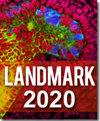新药对阿尔茨海默病治疗干预的影响。
IF 3.1
4区 生物学
Q2 Immunology and Microbiology
引用次数: 7
摘要
人口老龄化和增长的增加导致痴呆症患者人数的增加,阿尔茨海默病(AD)是最常见的原因。尽管经过数十年的深入研究,阿尔茨海默病仍未找到治愈方法。然而,已经提出了一些可能改变疾病进展并有助于控制症状的治疗方法。除了AD发病的经典假设,即淀粉样β肽(a β)积累和tau蛋白过度磷酸化外,将关键作用归因于其他分子机制的趋势正在推动对不同治疗靶点的研究。因此,旨在调节炎症、胰岛素抵抗、突触、神经发生、心血管因素和生态失调的药物正在塑造阿尔茨海默病治疗的新视野。在这一框架内,预计将增加用于疾病修饰治疗的候选药物的数量,并将重点放在潜在的多药物组合策略上。本文综述了以Aβ和tau为靶点的AD病理生理机制的最新研究进展。此外,它还介绍了临床研究中最重要的药物,靶向被认为参与阿尔茨海默病神经退行性过程的其他机制。本文章由计算机程序翻译,如有差异,请以英文原文为准。
Impact of New Drugs for Therapeutic Intervention in Alzheimer's Disease.
The increases in population ageing and growth are leading to a boosting in the number of people living with dementia, Alzheimer's disease (AD) being the most common cause. In spite of decades of intensive research, no cure for AD has been found yet. However, some treatments that may change disease progression and help control symptoms have been proposed. Beyond the classical hypotheses of AD etiopathogenesis, i.e., amyloid beta peptide (Aβ) accumulation and tau hyperphosphorylation, a trend in attributing a key role to other molecular mechanisms is prompting the study of different therapeutic targets. Hence, drugs designed to modulate inflammation, insulin resistance, synapses, neurogenesis, cardiovascular factors and dysbiosis are shaping a new horizon in AD treatment. Within this frame, an increase in the number of candidate drugs for disease modification treatments is expected, as well as a focus on potential combinatory multidrug strategies.The present review summarizes the latest advances in drugs targeting Aβ and tau as major contributors to AD pathophysiology. In addition, it introduces the most important drugs in clinical studies targeting alternative mechanisms thought to be involved in AD's neurodegenerative process.
求助全文
通过发布文献求助,成功后即可免费获取论文全文。
去求助
来源期刊

Frontiers in Bioscience-Landmark
生物-生化与分子生物学
CiteScore
3.40
自引率
3.20%
发文量
301
审稿时长
3 months
期刊介绍:
FBL is an international peer-reviewed open access journal of biological and medical science. FBL publishes state of the art advances in any discipline in the area of biology and medicine, including biochemistry and molecular biology, parasitology, virology, immunology, epidemiology, microbiology, entomology, botany, agronomy, as well as basic medicine, preventive medicine, bioinformatics and other related topics.
 求助内容:
求助内容: 应助结果提醒方式:
应助结果提醒方式:


